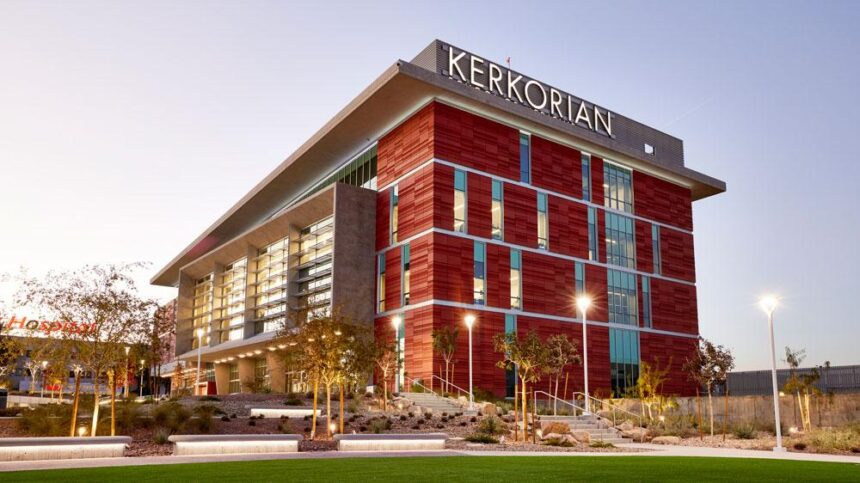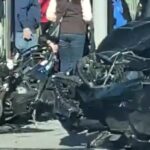UNLV School of Medicine Highlights Escalating Motor Vehicle Crash Trends and Urgent Safety Needs
Surge in Traffic Accidents: UNLV’s Latest Research Sheds Light on Contributing Factors
Recent findings from the University of Nevada, Las Vegas (UNLV) School of Medicine reveal a troubling escalation in motor vehicle collisions over the past year. The thorough study identifies critical causes behind this increase, emphasizing the pressing necessity for focused safety measures to enhance road safety and curb the rising frequency of severe crashes.
The examination highlights several alarming trends, including:
- A 35% escalation in accidents linked to distractions from mobile devices.
- A 25% growth in speeding-related crashes occurring predominantly during nighttime.
- A 40% increase in collisions where alcohol impairment was a significant factor.
| Cause | Increase Rate | Most Impacted Age Group |
|---|---|---|
| Mobile Device Distraction | 35% | 18-25 years |
| Excessive Speeding | 25% | 20-30 years |
| Alcohol-Related Incidents | 40% | 21-30 years |
Dissecting the Root Causes Behind the Rising Crash Rates
UNLV’s medical researchers have pinpointed several pivotal factors fueling the surge in vehicular accidents across both metropolitan and suburban regions. Chief among these are distracted driving behaviors—particularly the use of smartphones while driving—and a notable uptick in impaired driving cases. The data also reveals a demographic shift, with drivers aged 18 to 25 increasingly involved in crashes compared to previous years.Moreover, infrastructural shortcomings, such as outdated traffic signal systems and insufficient street lighting, exacerbate the risk of accidents.
Key statistics from the study include:
- Distracted Driving: Responsible for 42% of all reported crashes.
- Impaired Driving: Present in 27% of fatal collisions.
- Young Drivers (18-25): Account for 35% of total accident involvement.
- Infrastructure Deficiencies: Contribute to 18% of crashes.
| Cause | Accident Share | Year-over-Year Change |
|---|---|---|
| Distracted Driving | 42% | +7% |
| Impaired Driving | 27% | +3% |
| Young Driver Involvement | 35% | +5% |
| Infrastructure Issues | 18% | +2% |
Urgent Calls for Policy Reform to Enhance Traffic Safety
UNLV’s medical experts emphasize a sharp rise in traffic-related injuries and fatalities, particularly among young drivers and vulnerable road users, surpassing national averages over the last three years. The report identifies distracted driving,speeding in residential neighborhoods,and inadequate infrastructure as key contributors to this trend,underscoring the need for immediate legislative and community-driven responses.
Proposed measures include:
- Stricter enforcement of speed limits and anti-distracted driving regulations.
- Investment in enhanced street lighting and safer pedestrian crossings.
- Mandatory driver education programs targeting high-risk behaviors.
- Expansion of public transit to alleviate traffic congestion.
| Metric | 2019 | 2022 | Percentage Growth |
|---|---|---|---|
| Total Reported Crashes | 8,450 | 11,230 | 33% |
| Injury Incidents | 3,120 | 4,780 | 53% |
| Pedestrian-Involved Crashes | 920 | 1,470 | 60% |
Strengthening Driver Training and Infrastructure: A Dual Approach to Safer Roads
In light of UNLV’s findings, there is growing momentum among policymakers and safety advocates to overhaul driver education and invest heavily in traffic infrastructure improvements.Current driver training programs are criticized for insufficiently preparing motorists to handle complex and hazardous driving conditions. Experts recommend instituting compulsory advanced driving courses that emphasize defensive driving techniques, hazard detection, and immersive simulation training to better equip drivers.
Infrastructure enhancements are equally vital, with urban planners advocating for safer road layouts, upgraded traffic control devices, and expanded pedestrian-friendly zones.Key initiatives proposed include:
- Deployment of intelligent traffic management systems that dynamically adjust to traffic patterns to reduce congestion and accident risk.
- Development of protected bicycle lanes and enhanced crosswalks to safeguard non-motorized road users.
- Upgrading lighting and signage in high-risk areas to improve nighttime visibility and driver awareness.
| Focus Area | Expected Outcome | Implementation Timeline |
|---|---|---|
| Smart Traffic Signal Systems | Reduce congestion by 25% | Within 2 years |
| Enhanced Roadway Lighting | Lower nighttime crashes by 30% | Within 1 year |
| Expanded Driver Education | Boost hazard recognition and response skills | Ongoing |
Conclusion: A Collective Responsibility to Reverse Dangerous Trends
As UNLV’s School of Medicine continues to monitor and analyze evolving traffic safety data, the findings serve as a compelling call for coordinated action among legislators, drivers, and public health officials. Tackling the multifaceted causes behind the surge in motor vehicle crashes is essential to reversing this dangerous trajectory and fostering safer roadways throughout the region. Ongoing research and targeted safety initiatives will be critical in addressing this escalating public health challenge.










